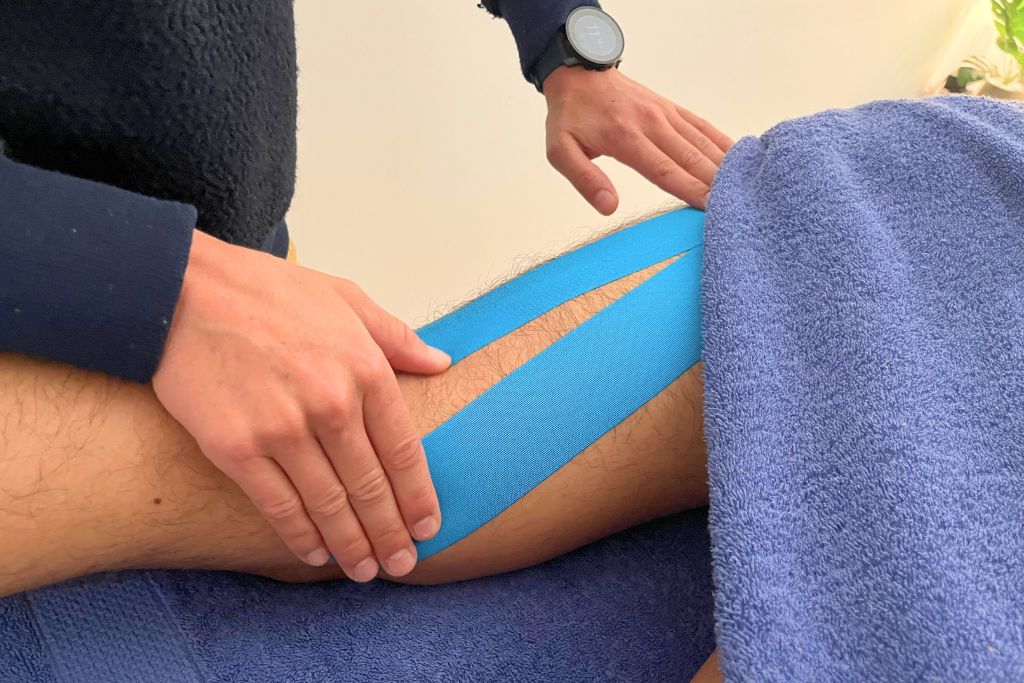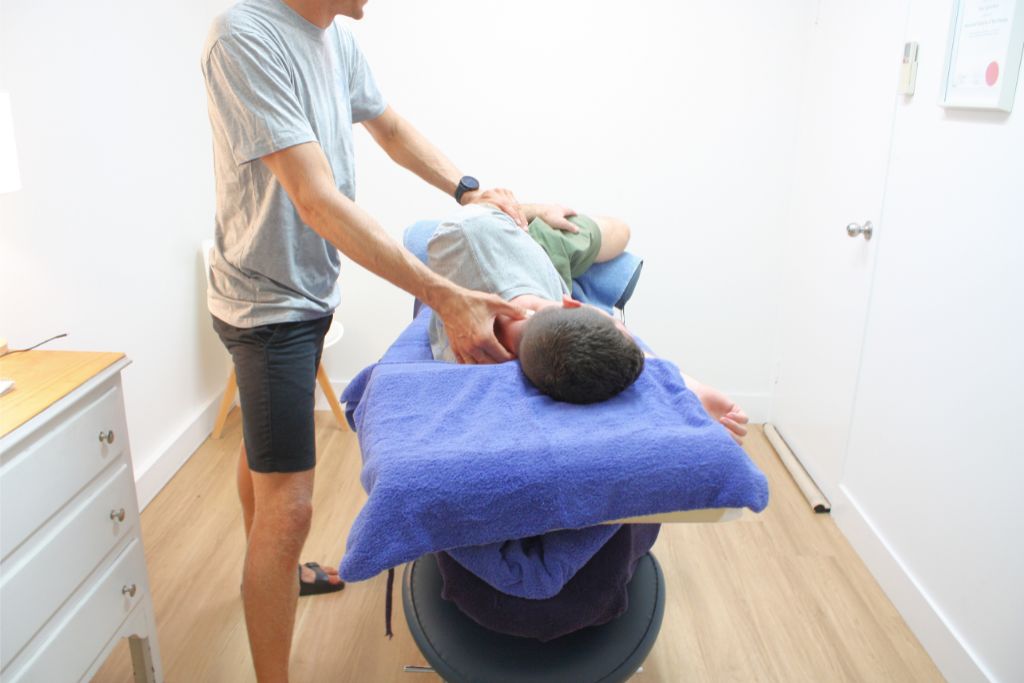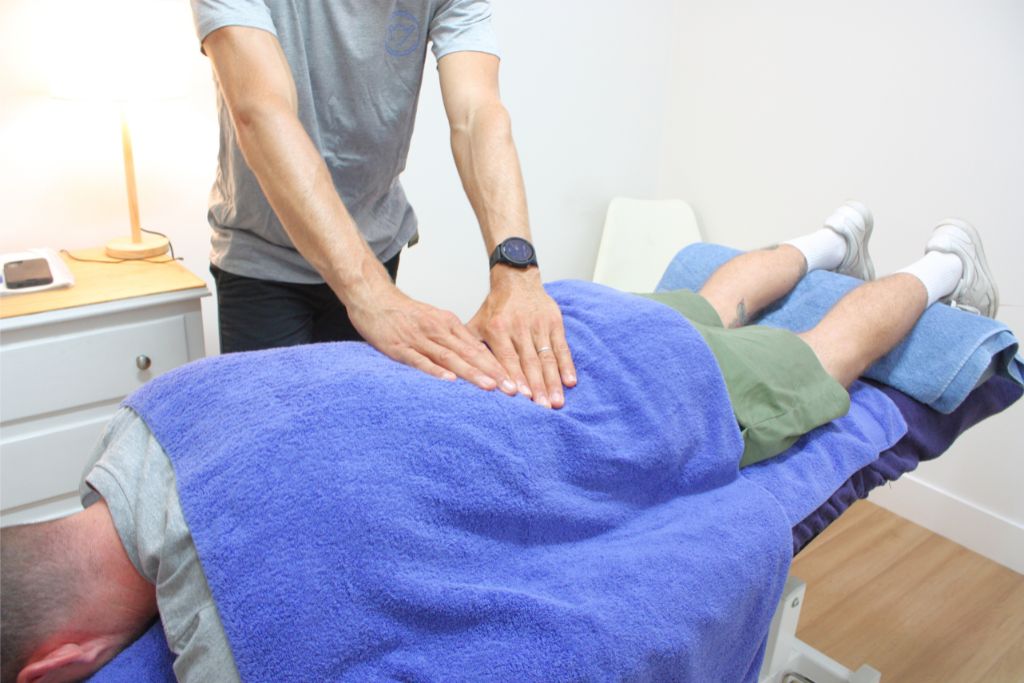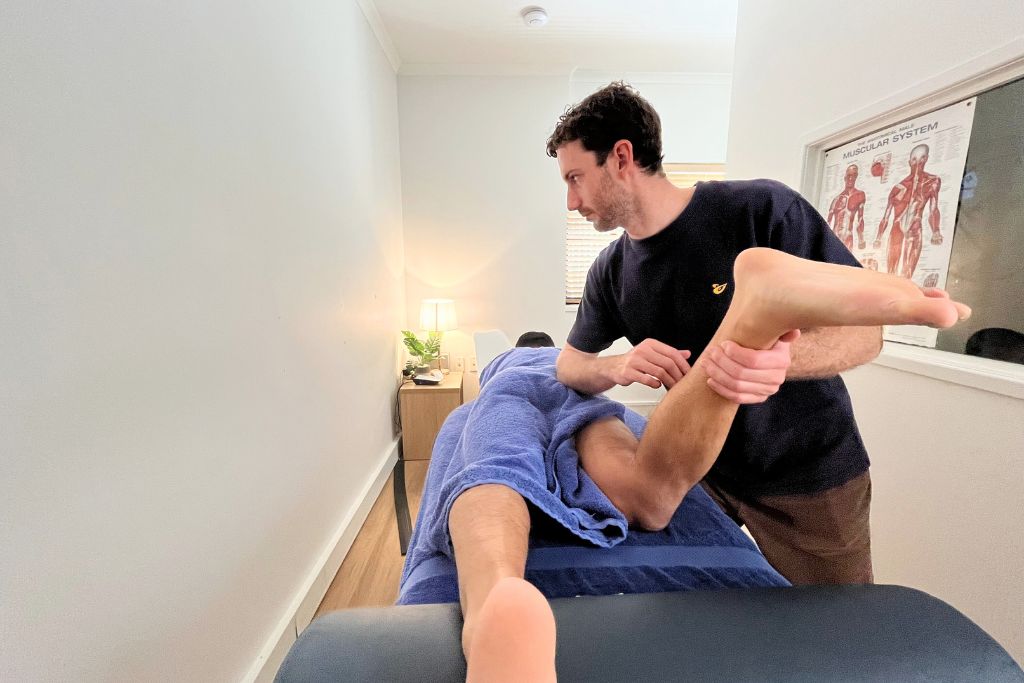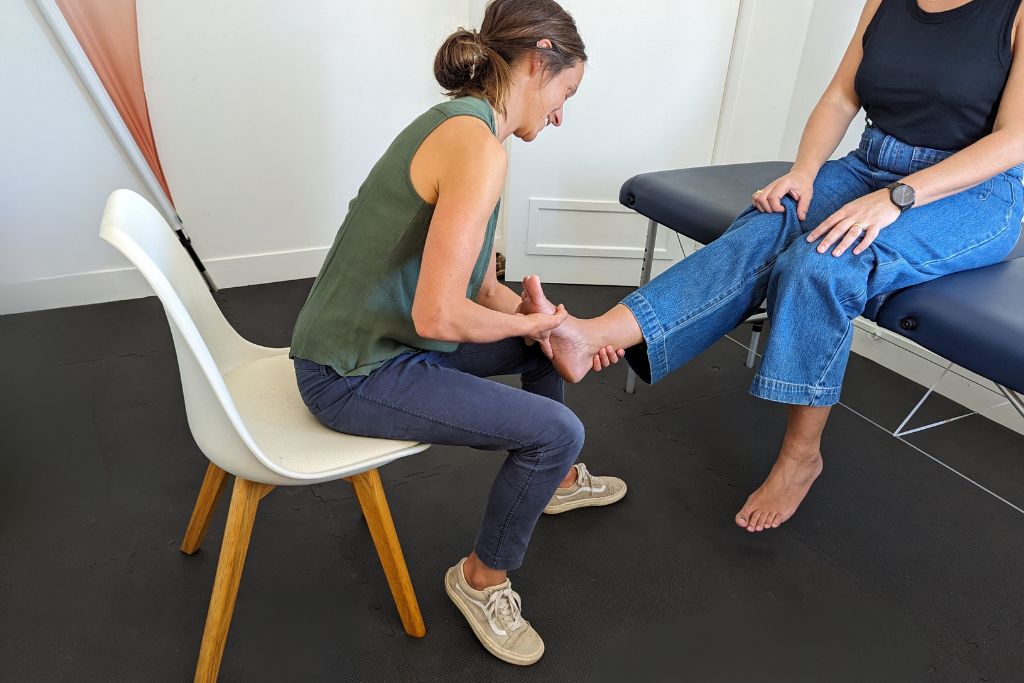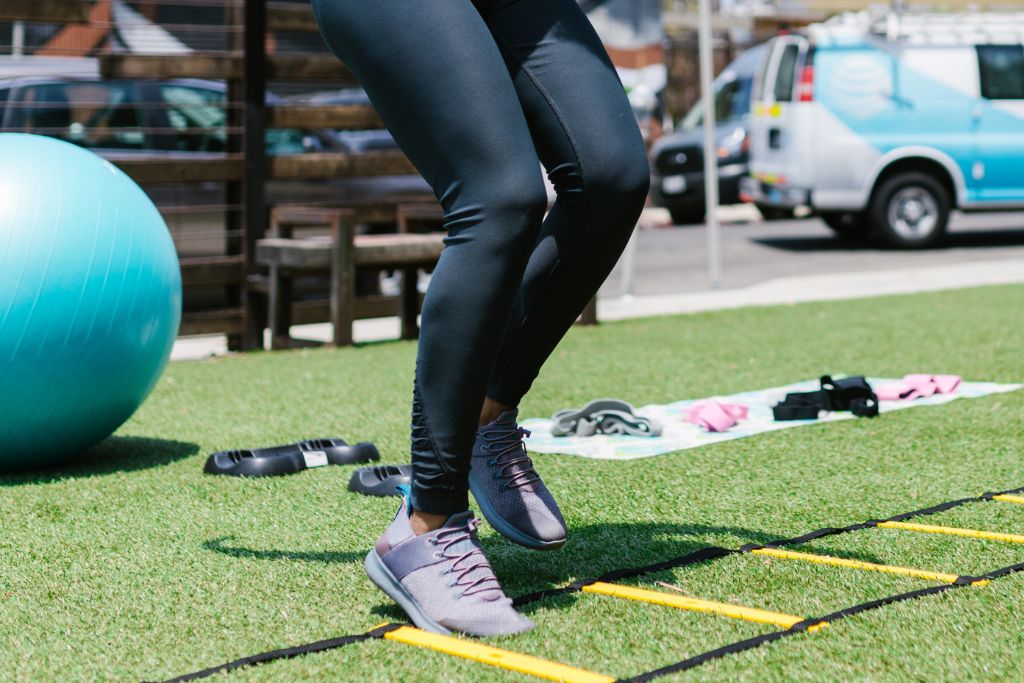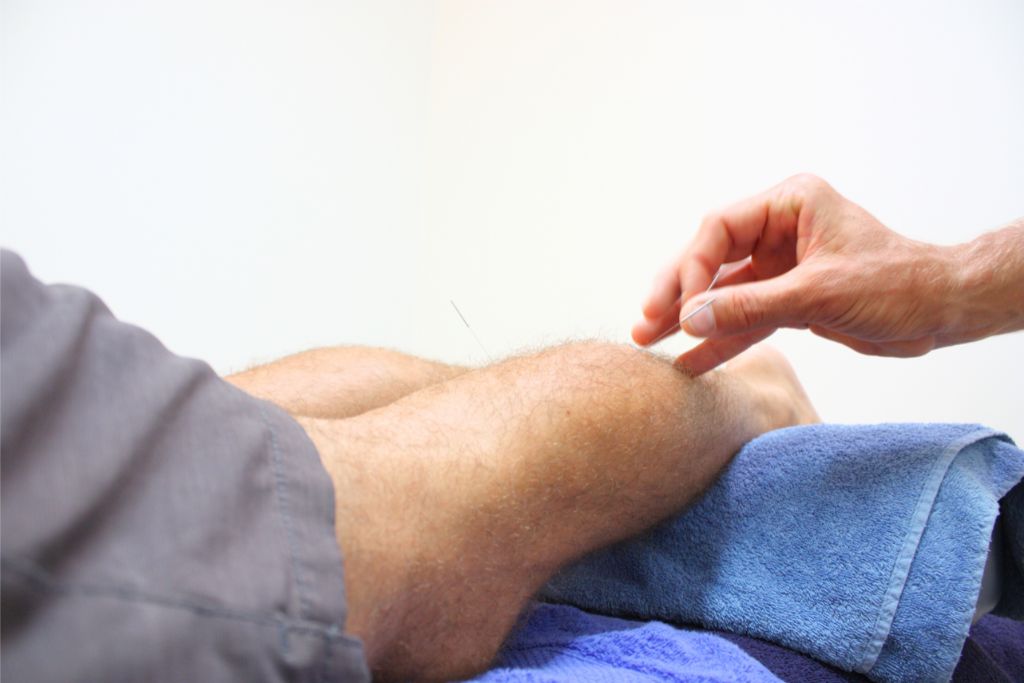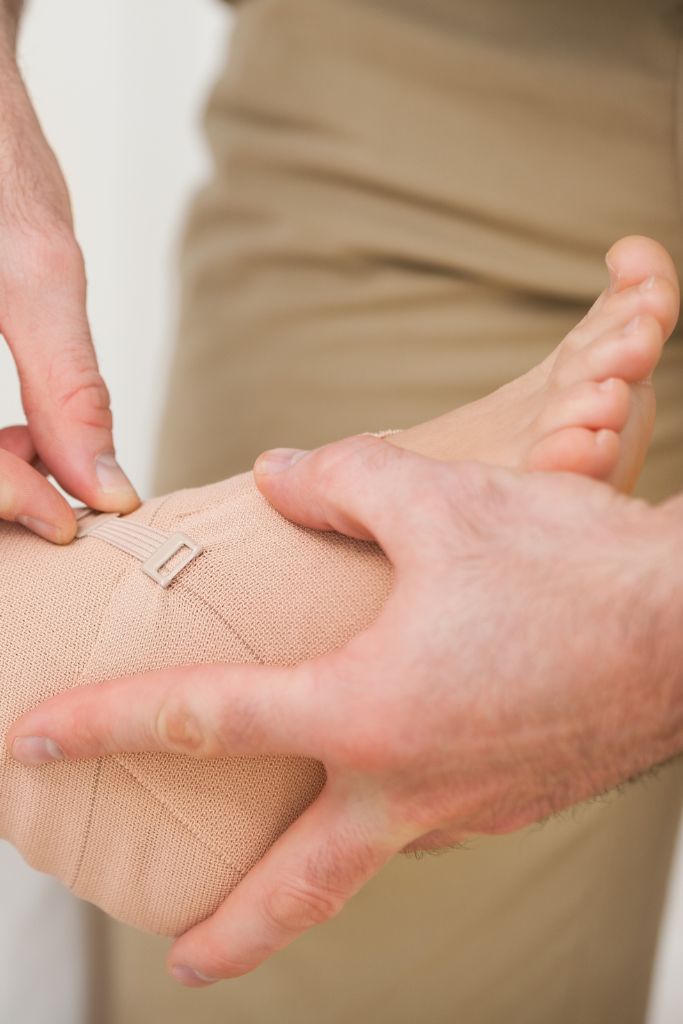Joint Support Strapping and Taping – Surf and Sports Myotherapy
Reduce the risk of future injuries and maintain an active, pain-free life!
Wrap up muscle woes and leap towards peak agility with our joint support strapping and taping solutions!
Struggling with sore muscles, stiff joints, or a recent injury? At Surf & Sports Myo, we strongly believe that everyone’s journey to wellness is unique. Our skilled professionals are committed to crafting a personalised treatment plan that not only eases your current discomfort but also improves your long-term health and wellbeing. By incorporating joint support strapping and taping into your routine, you can diminish the risk of future injuries and maintain an active, pain-free life.
What does joint support strapping mean and how does it work?
Joint support strapping – or sports strapping – is a technique used to provide additional support and stability to the joints and muscles during physical activity or exercise, particularly in sports that involve high-impact movements or sudden changes in direction.
The goal of sports strapping is to provide additional support to the joints and muscles without restricting movement or causing discomfort. This can help athletes perform at their best while reducing the risk of injury. At SurfSportsMyo, we have the expertise to assess your individual needs and apply the appropriate strapping technique.
Joint support strapping and taping can be used to prevent injuries, such as sprains or strains, as well as to support the recovery of existing injuries.
Joint support strapping involves the use of athletic tape or adhesive bandages to wrap and secure the joint or muscle being targeted. The strapping technique used will depend on the specific area of the body being supported and the level of support needed. Common areas of the body that may require sports strapping include the ankles, knees, wrists, and shoulders.
We specialise in strapping and taping for common types of injury
Joint support strapping and taping are commonly used to manage symptoms of musculoskeletal disorders, particularly in individuals with pre-existing conditions who suffer from chronic injuries.
Strapping Achilles Tendonitis
Strapping Knee
Strapping Patella Tendon
Strapping Ankle
Strapping Hamstring
Strapping Peroneal Tendonitis
Strapping Back
Strapping Hand
Strapping Calf
Strapping Heel
Strapping Ribs
Strapping Elbow
Strapping Hip
Strapping Shoulder
Strapping Toe
Strapping Wrist
Strapping Plantar Fasciitis
We serve joint support strapping and taping in the Noosa region:
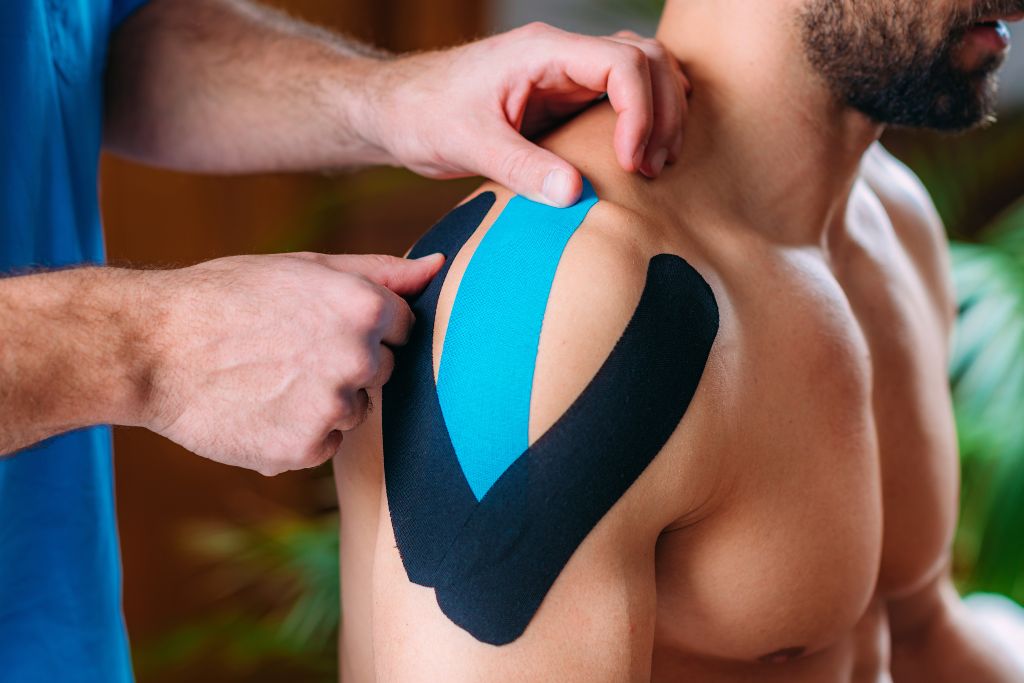
- Joint Support Strapping Sunshine Coast
- Joint Support Strapping Noosa
- Joint Support Strapping Cooroy
- Joint Support Strapping Peregian Beach
- Joint Support Strapping Coolum
- Joint Support Strapping Buderim
- Joint Support Strapping Mooloolaba
- Joint Support Strapping Nambour
- Joint Support Strapping Maroochydore
What our patients say about us
Explore our full range of services:
Frequently asked questions
How does strapping help injuries?
Strapping is a technique used to provide support and stability to the injured area. It can help injuries in several ways:
- Reduces pain by providing compression and support to the affected area
- Provides support, particularly helpful for injuries that affect the ligaments or tendons, as it can help to prevent excessive movement that could further damage these structures
- Improves joint function, particularly helpful for injuries that affect the range of motion of a joint, as strapping can help to improve the alignment and movement of the joint.
- Prevents re-injury, which is important for athletes or individuals who engage in activities that put them at risk for re-injury
How does strapping tape work?
The strapping tape works by providing compression to the affected area, which can help to reduce swelling and inflammation, reduce pain, and improve joint function. The adhesive on strapping tape is designed to stick to the skin and underlying tissues, providing a secure and stable base for the strapping technique. The tape is typically made of a strong and durable material, such as cotton or nylon, which can withstand the stresses and strains placed on it during activity.
Is strapping tape waterproof?
There are different types of strapping tape available, and some are designed to be waterproof or water-resistant. However, not all strapping tapes are waterproof, so it is important to discuss it with your therapist and determine the required level of water resistance.
What is the proper technique for applying rigid strapping tape on the knee?
The technique involves first applying an underlay tape for comfort and protection. The rigid strapping tape is then applied from the lower leg, around the knee cap and upwards, restricting movement and providing support. The tape should be applied with enough stretch to provide the necessary support, but not so tight as to restrict blood flow.
Can rigid strapping tape be used as part of an exercise rehabilitation program for the knee?
Yes, rigid strapping tape can help in an exercise rehabilitation program. It can provide muscle support, restrict excess movement, and aid in injury prevention and recovery, thereby facilitating effective exercises and strengthening of the knee.
Can I use kinesio tape instead of rigid strapping tape for my knee condition?
Yes, kinesio tape can be used as an alternative to rigid strapping tape. It’s gentler, more elastic, and can provide dynamic support. Kinesio tape can help raise the skin to enable increased blood flow and lymphatic drainage to soothe and reduce muscle fatigue.
What is the size and colour of the rigid strapping tape used for the knee therapy?
The rigid strapping tape used for the knee therapy generally comes in various sizes, typically ranging from 25mm to 50mm in width for covering different areas of the knee. The colour may vary from manufacturer to manufacturer but is commonly available in white or beige.
What is the correct description for applying elastoplast rigid strapping tape on my knee?
The correct description involves a technique where the tape is first applied below the knee cap, then extends above the knee cap while maintaining a comfortable stretch. It’s wrapped in a way to help provide extra support and restrict certain movements that may cause injury. It’s designed to act like a second skin, providing gentle support for the knee.
How does strapping tape help with the ACL rehabilitation exercise?
Strapping tape helps protect, stabilize, and restrict movement around the ACL during rehabilitation exercises. The adhesion ensures the ligament isn’t exposed to movements or stretch that could impede recovery. It’s an effective means to prevent re-injury and ensure a safer rehabilitation process.
What does rigid strapping tape do for knee rehabilitation therapy?
Rigid strapping tape aids in knee rehabilitation therapy by providing necessary support and restricting harmful movements, allowing the knee to heal efficiently. The condition of the knee joint greatly improves since the strapping tape largely reduces muscle fatigue, encouraging proper rest and recovery.
Can I wear strapping tape for an extended period on my knee?
Extended usage of rigid strapping tape can benefit knee support but should also be monitored for any discomfort that may arise. It’s important to change the tape regularly, especially if it becomes loose, to ensure optimal support. If you experience any persistent discomfort, please contact us or seek immediate medical attention.
Come and meet Gary Javonena,
Noosa’s well loved sports massage therapist
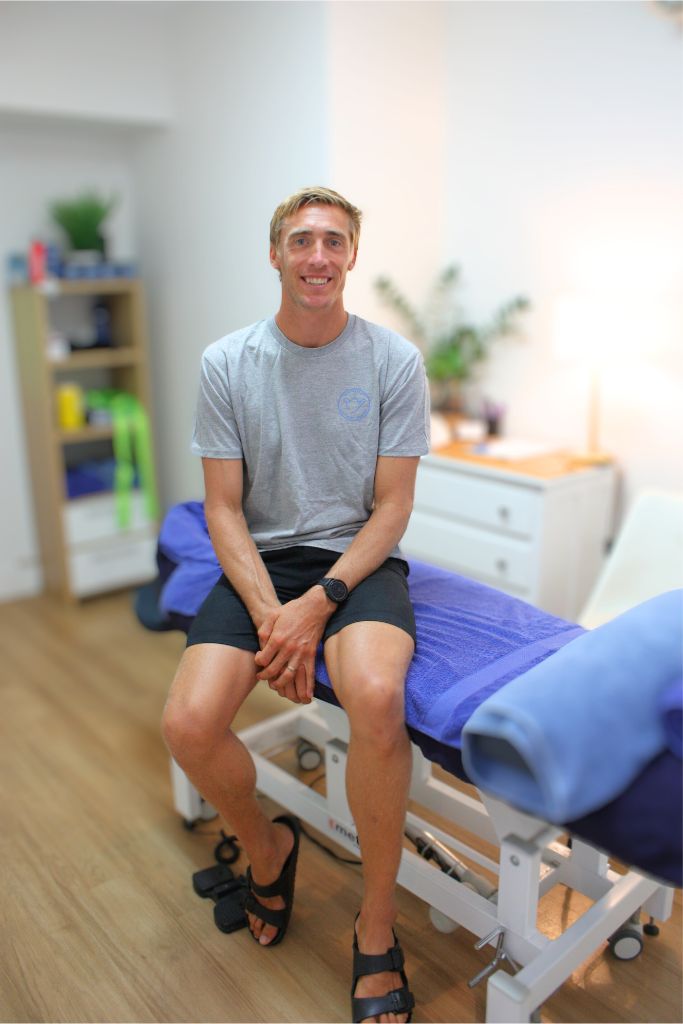
There, I was working in a busy private practice with a bunch of legends who helped me become the person and practitioner I am today.
Also, surfing is my thing.
When I’m not working you can find me at the nearest beach riding waves and, when the surf is flat, I swop my board for a mountain bike and pedal hard in Wooroi, Nambour or wherever I can have fun!
Finally, you might also see me on a jetski dressed in yellow and red on the weekends, as part of the Noosa Lifeguards team.
I’ll tell you more when we meet!
I have decided to become a myotherapist, remedial massage therapist and dry needling practitioner because in my mind, there is nothing more rewarding than helping people to get back to doing what they love and feeling healthy and happy.
Come and see us, we’re here to help!
Opening Times
Monday to Friday : 08:00 – 19:00
Saturday: 08:00 – 16:00
